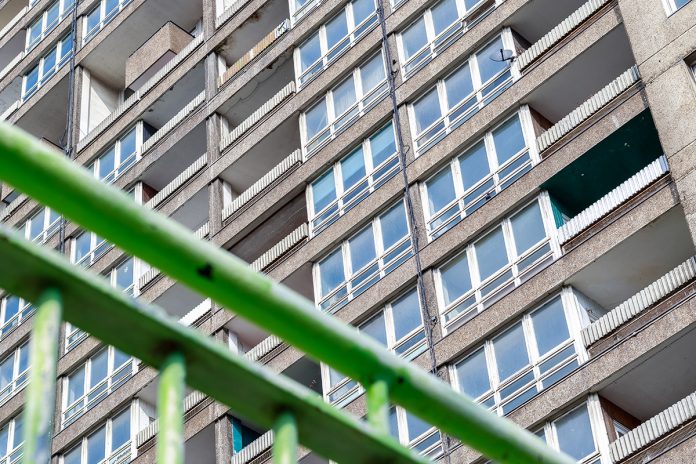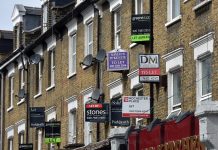Gideon Bolt & Rutger Pierik from Utrecht University share their expert thoughts on social interaction in mixed building blocks when it comes to finding the ‘magic mix’ in the academic literature concerning the housing market
Creating mixed communities to counter the negative effects of segregation has received much scepticism from the perspective of academics. Bolt & Van Kempen (2013) distinguish between three types of critical arguments in the literature. The first argument is that mixing does not address the real problem. Mixing policy is a way of treating the symptoms of inequality rather than the causes. The second argument is that mixing has negative side effects, like forced relocations and the diminishment of the public housing sector. The final – and probably also the most discussed – argument is that mixing does not work. Most of the expected positive effects of the social mix rely on the development of bridging social capital but in practice, social interactions between members of different social groups are quite rare.
At the same time, Bolt & Van Kempen also add nuance to the academic debate by stressing that contextual factors play a role in the success of the social mix or the lack thereof. Not all social mix projects have disappointing outcomes. Whether projects succeed depends on a combination of different factors, like the quality of the architecture and the public space, levels of investments in community development, the level of heterogeneity of the residents and the specific spatial configuration of the project.
Magic mix
Pierik (2019) made an inventory of the factors that stimulate social interactions within mixed housing projects in the Netherlands. He looked at a specific type of mixed housing, which is coined as ‘magic mix.’ A magic mix project is a project in which a combination of vulnerable residents and supportive residents are housed within one housing complex. Examples of vulnerable categories are refugees, homeless people and people with intellectual or psychiatric disabilities. Supportive residents tend to be young households, for whom a magic mix project can be a shortcut to the entry on the housing market as they can bypass the waiting lists for regular social housing. Supportive resident are not the formal caretakers for the vulnerable residents, but they are requested to invest time in organising activities and engaging with vulnerable residents. In some projects, supportive residents get a temporary residence contract, in other projects they get a permanent contract. The projects vary in scale. The largest case study in Pierik’s research consisted of 540 dwellings and the smallest had only 30 dwellings. Bases on 14 in-depth interviews with researchers, architects, urban designers and representatives of housing corporations and care organisations, Pierik (2019) made an inventory of the factors that stimulate social interaction between vulnerable and supportive residents.
Physical factors stimulating social interactions
The following physical factors may help to stimulate social interactions between residents.
Size: In large complexes, there is a higher risk of feelings of unsafety and anonymity. It is better to strive for relatively small complexes (a maximum of 150 units). Larger complexes are feasible if they are split up in smaller compartments.
Communal space: A communal space is crucial for the organisation of activities like having dinner together or playing games. As it should function like a living room, it is crucial to create multiple communal spaces in the larger projects, for example, one living room per storey. A living room for each 10-20 person is seen as optimal.
Transition zone: There should be a smooth transition between private and public space. For instance, a small garden in front of the apartments at the ground level may stimulate interactions with passers-by, while a hard demarcation line may lead to retreatment (e.g. having the curtains closed all day).
Entrance: The entrance should be designed in a way that it is a welcoming place. In this way, fluid encounters or chats between residents are stimulated.
Corridors: Wide corridors not only enhance the feelings of privacy (people pass by at a larger distance) but also make it easier for people to appropriate this space (for instance by placing chairs). At the same time, this stimulates fluid encounters with other residents.
Floor plan: Locating the kitchen at the side of the corridor enables light interactions with passers-by. (In the kitchen, there is less need of privacy than in – for instance – a sleeping room).
Amenities: Amenities at the ground floor level (like cafes or shops) stimulate interactions between residents within the complex as well as with residents in the rest of the neighbourhood.
Social factors stimulating social interactions
While physical factors are helpful in creating the right conditions for social interactions, other factors are probably more important. For instance, the role of caretaker is crucial. The caretaker is taking care of the management of the building on behalf of the housing association. His role is not only to make sure the complex is maintained well but also to intervene in conflict situations and to help stimulate communal activities. Next to that, much emphasis is placed on the self-management of the residents. To stimulate self-management, residents associations are established and several commissions are formed, focused on – for example – the organisation of communal activities, selection of new residents or maintenance of the communal garden.
Perhaps the most crucial factor in the success of magic mix projects is the selection of supportive residents. A careful screening process is needed to exclude young people who only apply for these projects to find a dwelling as soon as possible. These people are not likely to invest time in communal activities. Although the requirements in the residence contract concerning investment in the community are not watertight in a legal sense, most projects have succeeded in attracting residents that are committed to the public good.
References
Bolt, G. & Van Kempen (2013) Introduction Special Issue: Mixing neighbourhoods: success or failure? Cities 35, 391-396.
Pierik, R. (2019) Fysieke kenmerken & sociale interactie in gemengd wonen projecten [Physical characteristics & social interaction in mixed housing projects]. Master thesis, Utrecht University.











